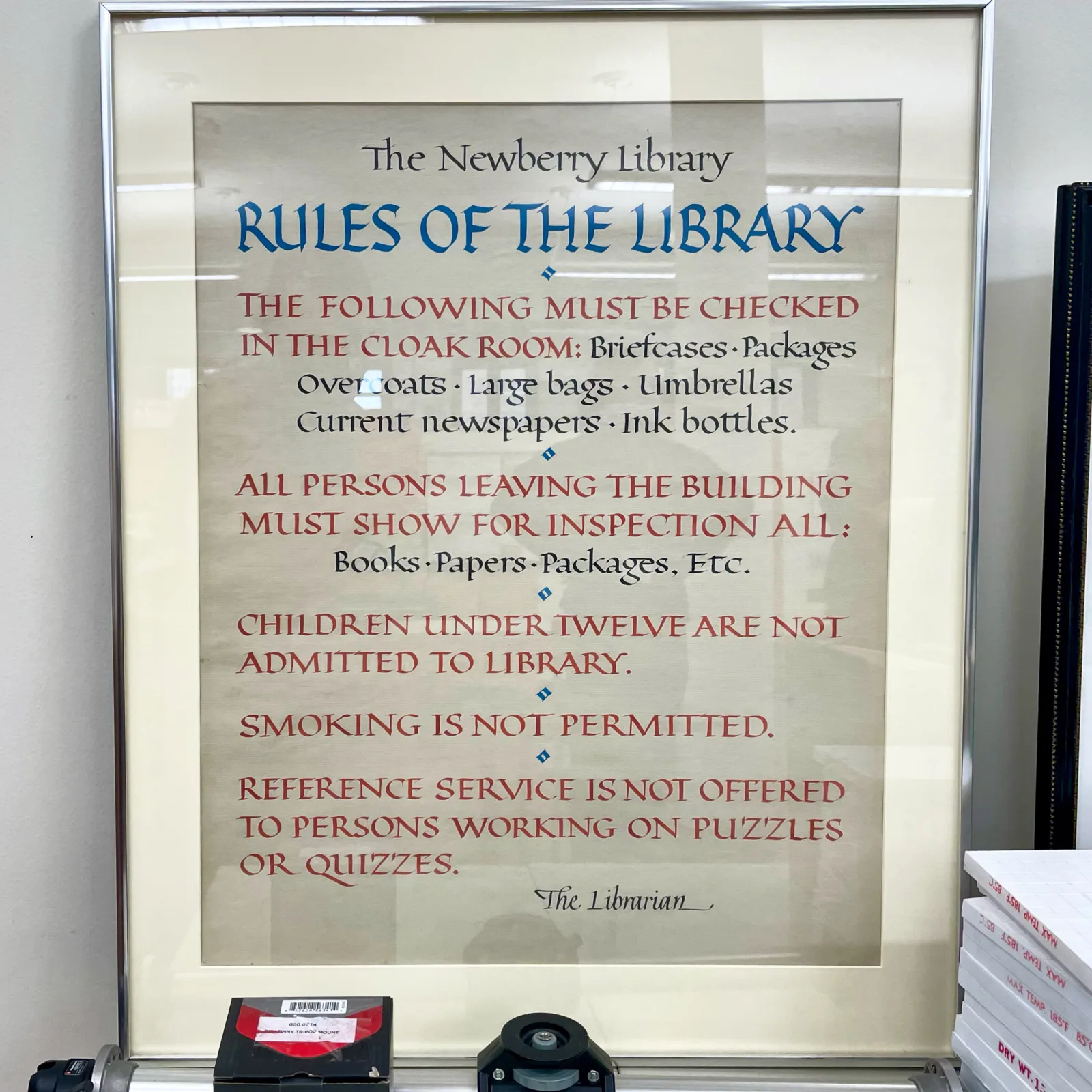Next time you visit the Newberry, don’t forget to check your ink bottles in the cloak room.
Made by lettering artist James Hayes in the 1950s, this “Rules of the Library” sign once hung in the halls of the Newberry. Though some of these rules are still enforced (like no smoking), a few have changed (we’re now happy to help with puzzles and quizzes).
The sign itself lives on as an embodiment of the artistry of James Hayes. His unique calligraphic style—like the flair of the final “The” and the display capitals of the title—shines through prominently in this piece.

Just as fascinating is being able to see Hayes’s process, as shown by the tracing paper mockups that are part of the James Hayes Papers at the Newberry.
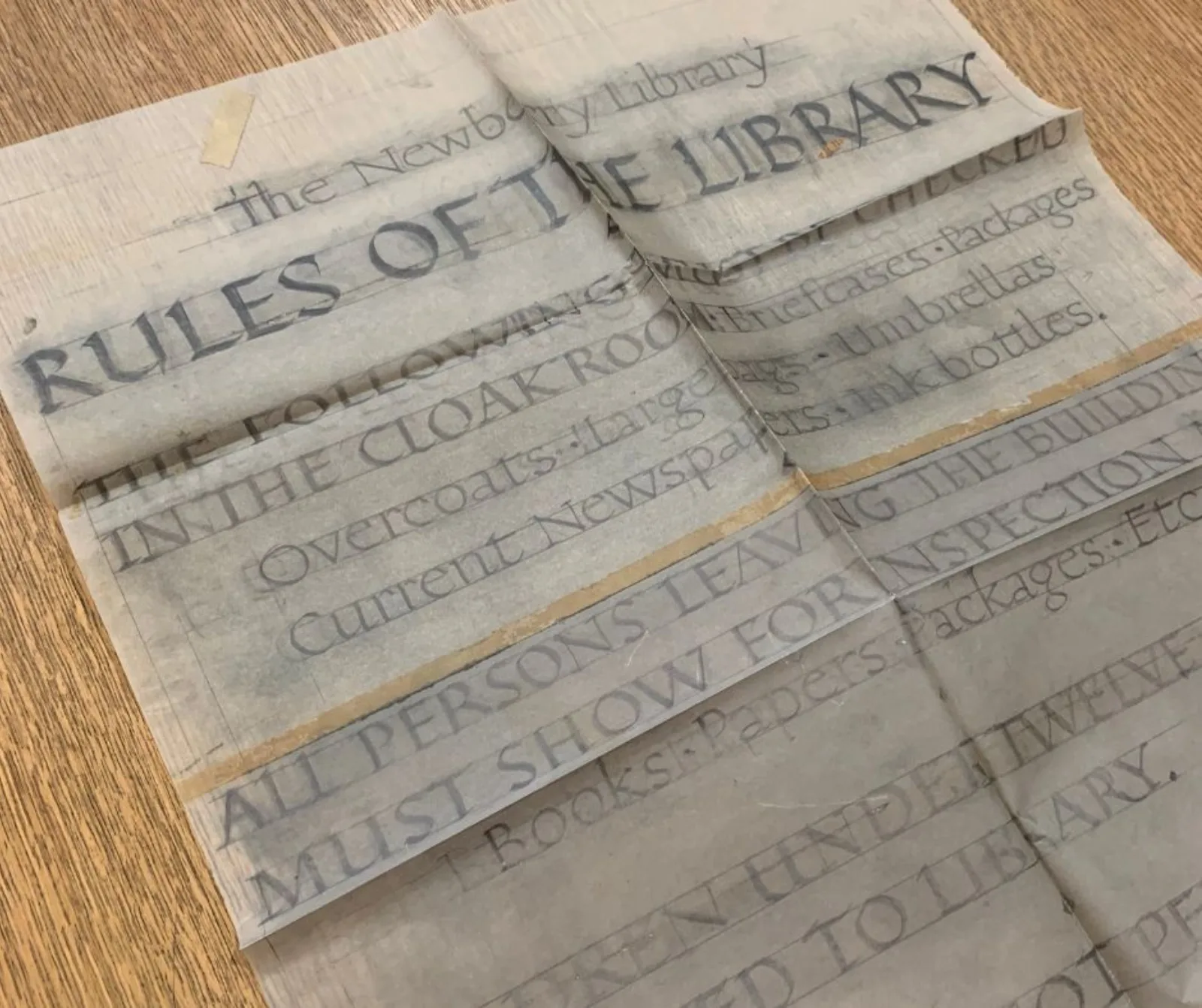
The collection also includes Hayes’s printed pieces, client files, correspondence with lettering artists around the world, and pieces Hayes collected from other calligraphers.
James Hayes came to Chicago in 1926 to attend the School of the Art Institute, where his mentor was Ernst F. Detterer—the Newberry’s curator of printing history from 1931-1947. From 1932 to 1942, Hayes worked in the display department of Marshall Field & Company while doing freelance calligraphy on the side.
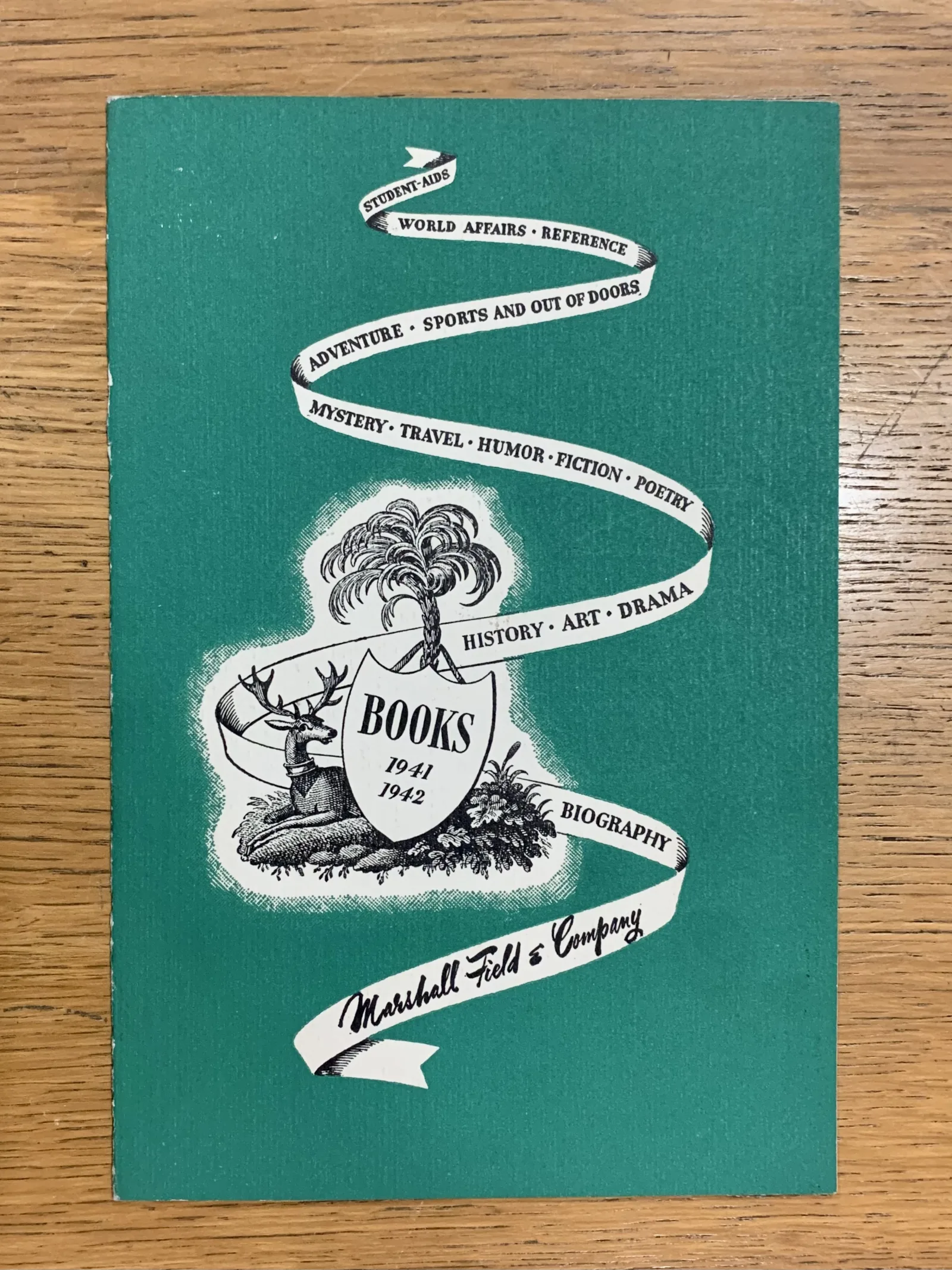
Hayes continued to work as a freelance lettering artist in Chicago for most of his career. He created countless signs, logos, lettering, and printed pieces for hundreds of clients, including Ryerson Steel, Rush Presbyterian St. Luke’s Hospital, the Bank Marketing Association, and R.R. Donnelley & Sons.
One of Hayes’s major publications was a catalog for an exhibit on the Roman Letter. Admired and hailed as influential in the printing community, the exhibit was held at the gallery of the R.R. Donnelley & Sons Chicago headquarters from 1951-52. Hayes’s catalog was widely distributed by Donnelley and reprinted by the company in 1965.
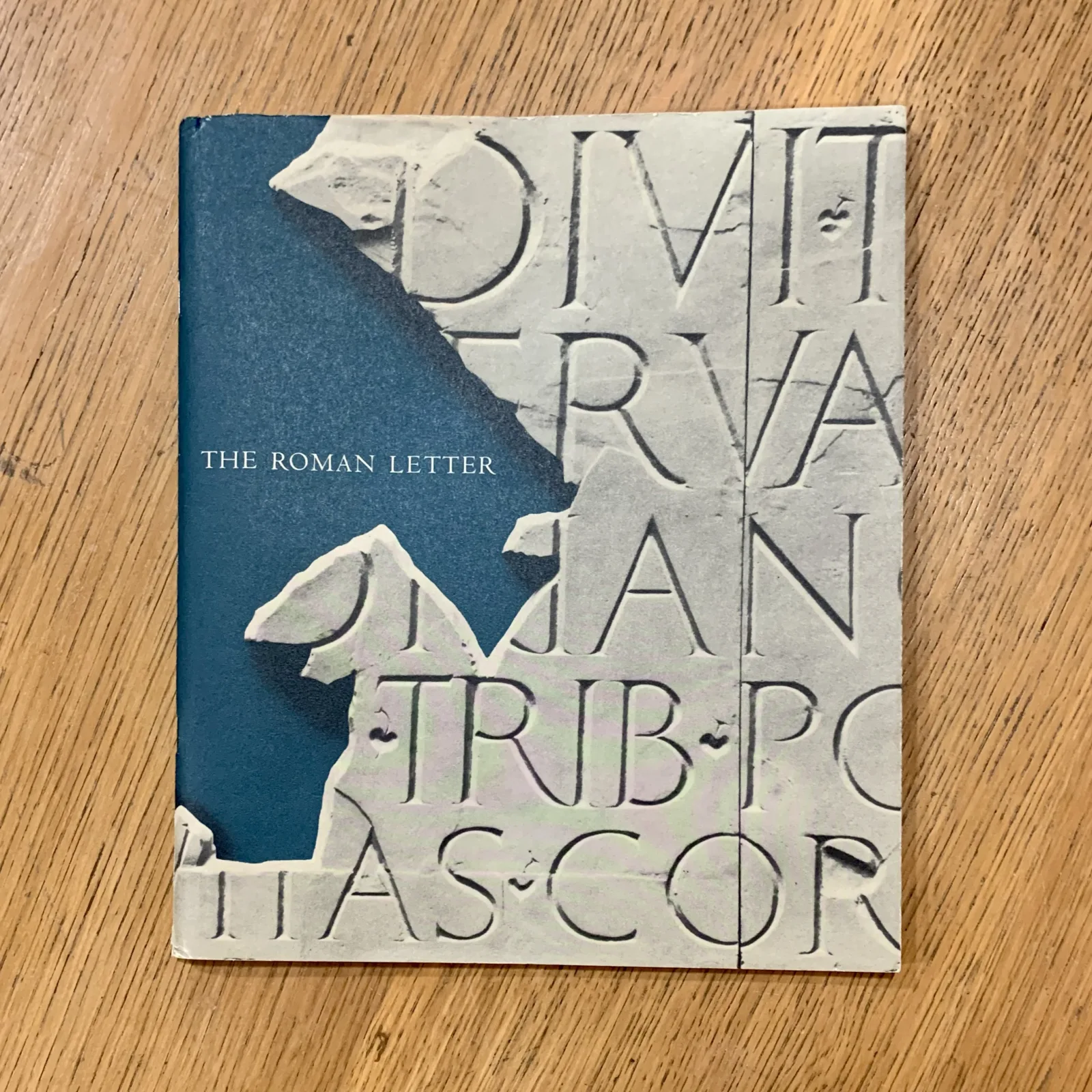
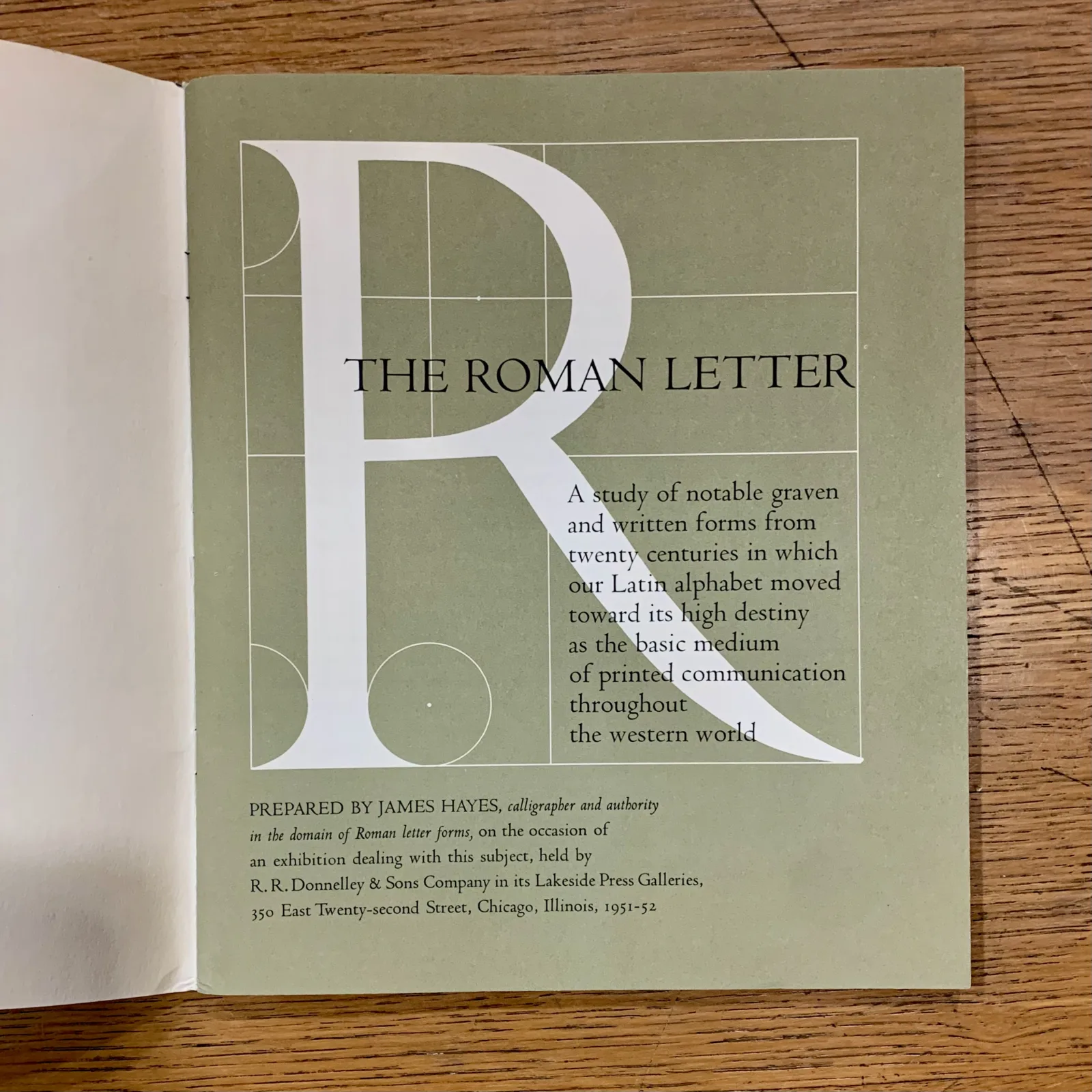
Though Hayes made countless print pieces, his bread and butter—and what he was and is best known for—was the bookplate. Bookplates are printed or decorative labels that are pasted into a book, oftentimes to indicate ownership. In addition to making bookplates for many of his clients, Hayes collected a number of bookplates from other artists around the world (which are now part of our collections here at the Newberry). Hayes even designed a bookplate for the Newberry, another one of his major clients.

Following Detterer’s passing in 1947, Hayes directed the Newberry’s Calligraphy Study Group until it disbanded in 1960. Hayes also had a hand in designing several elements of the Newberry’s brand identity in the mid 20th century, including a calligraphic logo that was used in brochures, signage, and other printed products for decades.
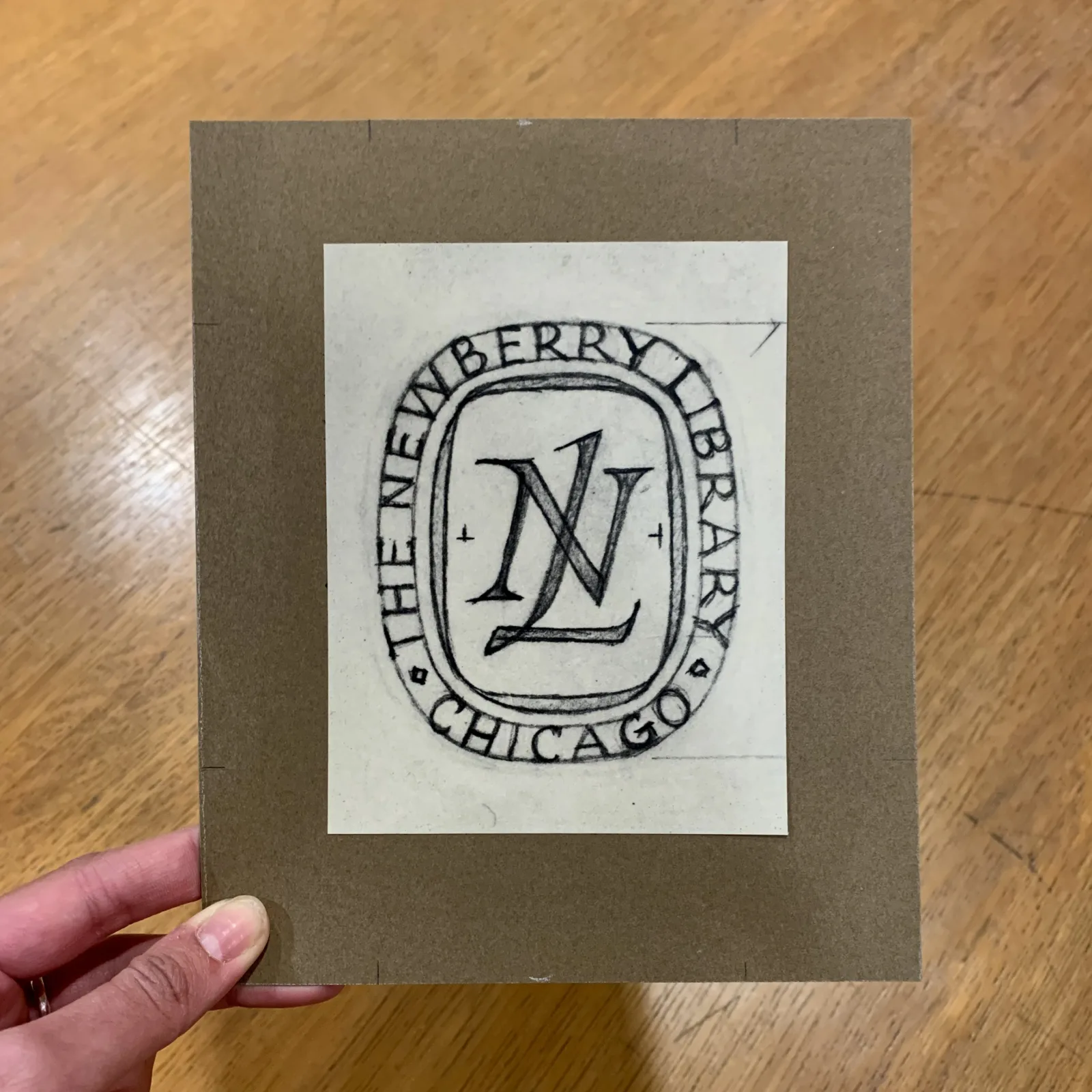
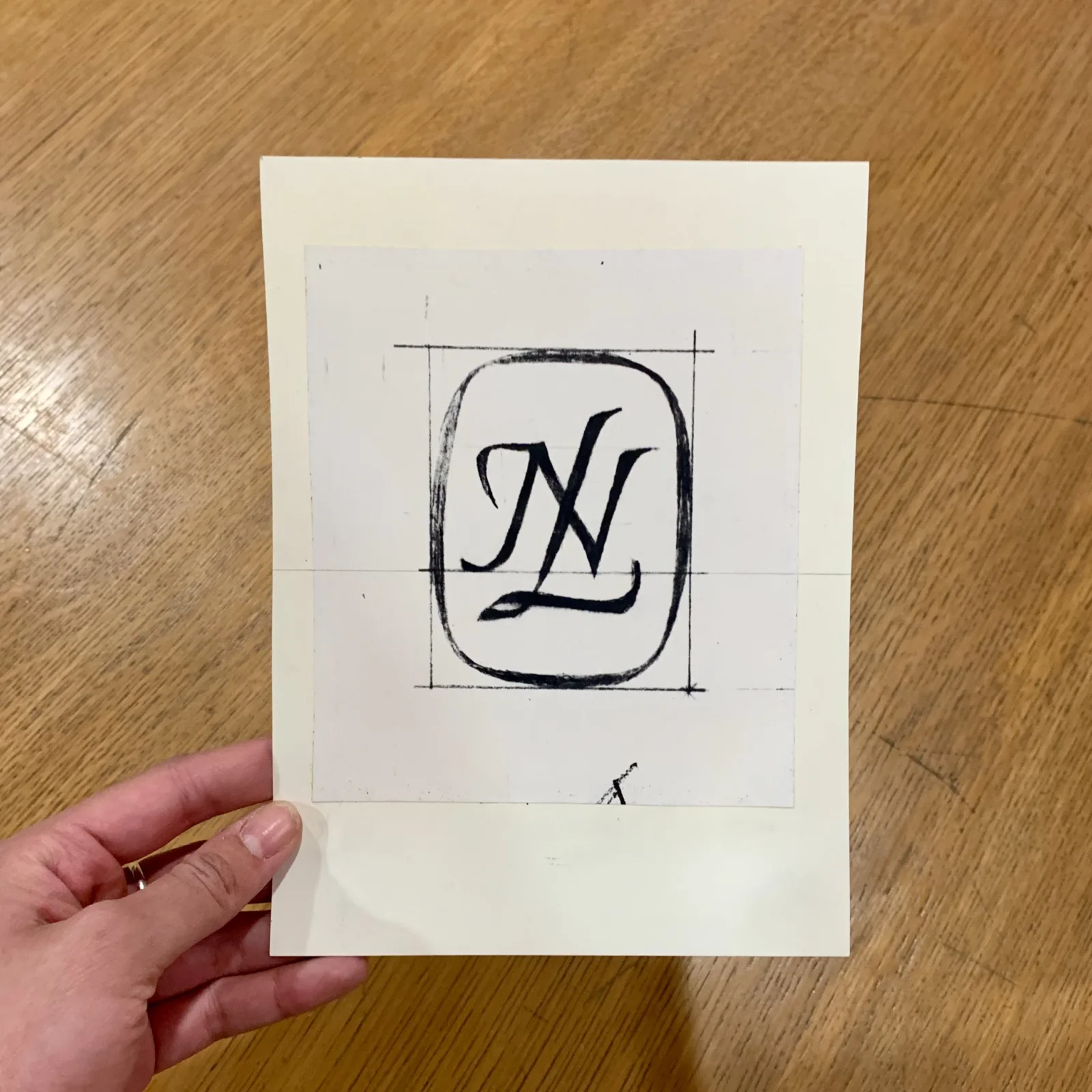
Hayes’s work was widely exhibited and included in published collections of contemporary calligraphy from the 1950s until his death in 1994, and his impact on the calligraphic world can’t be understated. Here at the Newberry, Hayes’s contributions have undoubtedly helped to shape our brand identity into what it is today.
About the Author
Haku Blaisdell is the Communications Coordinator at the Newberry Library.
